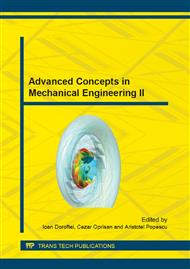p.571
p.577
p.585
p.589
p.595
p.601
p.607
p.611
p.617
Predict Air Pollution in Brasov City with Regression Models
Abstract:
Vehicle transportation is now an important part of our civilization and as it happened with much other technological advancement, the negative aspects are becoming more and more pronounced. One of them is air pollution from vehicles exhaust gases. This pollution has many adverse effects, whose manifestation and character varies depending on the geographical scale in consideration. The relative contribution of different combustion sources is a function of economic, social and technological factors, but all mixtures contain certain primary gaseous pollutants, such as volatile organic compounds (VOC), nitrogen oxides (NOx) and carbon monoxide (CO), that are emitted directly from combustion sources, as well as secondary pollutants, such as ozone (O3), that are formed in the atmosphere from directly emitted pollutants. The elevated concentrations generally occur with in a few hundred meters of the road, although his distance may vary depending on traffic patterns, environmental conditions, and the presence of near roadway urban structures. For the realized study it was choose a route from the historical centre of the Brasov City. In this study is presented the methodology for a prediction model for urban air pollution.
Info:
Periodical:
Pages:
617-622
Citation:
Online since:
October 2014
Authors:
Keywords:
Price:
Сopyright:
© 2014 Trans Tech Publications Ltd. All Rights Reserved
Share:
Citation:


